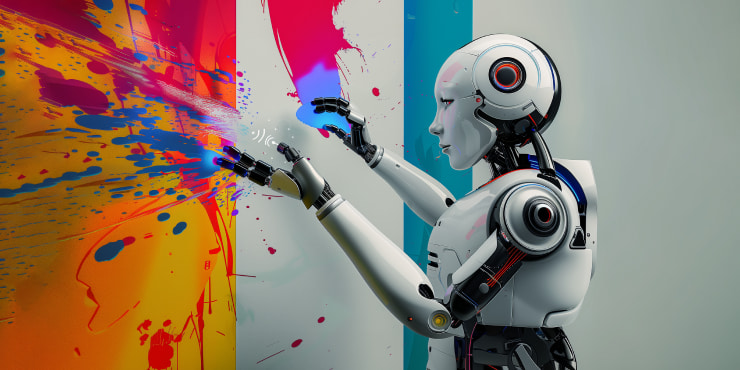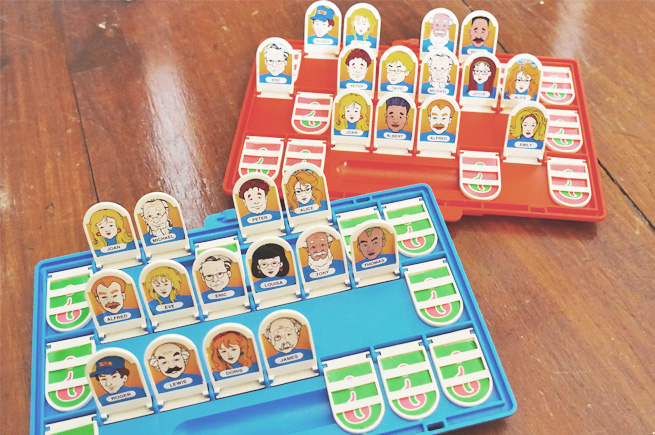Exploring the potential of ChatGPT’s most powerful mode for structured, scalable insight work.
ChatGPT has already found a home in research teams. It can clean up open ends, summarise transcripts, and write first drafts of surveys. It remembers tone, spelling preferences, and even your sector. But once the chat ends, that context disappears.
There’s no project memory. No continuity. No understanding of how you build trackers, tag themes, or adapt outputs by stakeholder.
You re-teach it every time.
Agent Mode changes that. Or rather, it can.
🤖 What Is Agent Mode?
Agent Mode turns ChatGPT into a persistent AI teammate.
Unlike Standard Mode, which resets every time you start a new chat, Agent Mode can be trained to follow your ways of working. It holds onto project knowledge, coding rules, preferred templates, and folder structures, all across time.
You can teach it once, and it applies that knowledge again and again.
🔍 Agent Mode vs Standard Mode: What’s the Real Difference?
| Feature | Standard Mode | Agent Mode |
|---|---|---|
| Memory | General, based on user history | Task-specific, based on project needs |
| File Access | Manual uploads only | Can access folders and saved files |
| Prompting | Repetitive, must explain each time | Context-aware, remembers structure |
| Adaptability | One-off help | Continuity across projects and clients |
| Scalability | Best for short bursts | Best for ongoing workflows |
Agent Mode doesn’t just remember you. It remembers how you work.
Put simply:
>Standard ChatGPT is helpful for quick fixes.
>Agent Mode is useful for repeatable tasks that benefit from memory.
🛠️ 7 Research Tasks Agent Mode Could Reshape
Here’s how each task looks in Standard ChatGPT vs Agent Mode, and why that shift matters.
🗂️ 1. Coding and summarising open-ended responses
Once Agent Mode learns your tagging and codeframe logic, it can apply it wave-on-wave without repeating instructions.
🔁 Standard ChatGPT Prompt:
“Code these 100 open ends from Wave 7 of our switching tracker. Use our brand-switching codeframe (pasted below). Please group codes under relevant themes, remove any low-effort responses (e.g. ‘dunno’, ‘nothing’), and summarise key shifts since Wave 6. Flag anything new or unexpected.”
🧠 Agent Mode Prompt:
“Please code the Wave 7 open ends using the switching framework already stored. Group responses under the standard themes, exclude low-effort answers, and summarise any shifts vs Wave 6. Refer to the trend summary from Wave 6 saved in the Tracker folder for comparison.”
✅ Why this works: The Agent recognises your coding rules and applies them consistently across waves.
🌍 2. Structuring concept test comparisons
Agent Mode can pull your benchmarks, KPIs, and deck language to build comparisons across concepts and markets.
🔁 Standard ChatGPT Prompt:
“Compare Concept A and Concept B for Germany and Spain. Use the Q1 debrief format pasted below. Focus on differences in standout, uniqueness, and purchase intent. Use our standard thresholds: highlight metrics over 60% or below 40% in red and green respectively. Avoid overinterpreting small differences.”
🧠 Agent Mode Prompt:
“Compare Concept A and B in Germany and Spain using the Q1 concept test debrief format. Include standout, uniqueness, and PI. Flag anything outside our usual green or red thresholds and apply the existing copy language from the Comms folder. Skip interpretive spin unless there’s a strong deviation.”
✅ Why this works: You’re not starting from scratch. The Agent uses your preferred formats and thresholds instantly.
🧾 3. Drafting questionnaires with built-in logic
Once your screener, tone, and phrasing preferences are defined, Agent Mode can build new surveys aligned with your structure, drawing from past projects and adapting wording for different audiences.
🔁 Standard ChatGPT Prompt:
“Please create a 12-question survey for a new healthy snack brand targeting Gen Z. Use the tone from our skincare study (pasted below) — conversational and playful but informative. Follow the structure of our Q2 tracker:
Q1: Brand awareness
Q2–3: Imagery
Q4–6: Drivers
Q7: Category habits
Q8–10: Concept evaluation
Q11: Reactions
Q12: Purchase intent
Rotate multi-codes and randomise benefit lists. Use 5-point scales.”
🧠 Agent Mode Prompt:
“Draft a 12-question survey for a healthy snack brand targeting Gen Z using our Q2 tracker structure. Match tone from the skincare study saved in the Tones folder. Include brand awareness, imagery, drivers, and concept testing with rotation logic. Randomise multi-codes and apply our standard 5-point agreement scale. Add Gen Z phrasing like in our energy drink project.”
✅ Why this works: It pulls tone, structure, logic, and audience nuance from earlier work, so you don’t have to explain it again.
✍️ 4. Generating creative variations and copy tests
Agent Mode can produce tailored creative ideas and simulate reactions using your defined segments or brand frames.
🔁 Standard ChatGPT Prompt:
“Write 5 headline variations for a new oat-based protein drink aimed at eco-conscious consumers aged 30–44. Focus on clarity and credibility. Avoid generic wellness language. Reference our sustainable food tone doc (pasted below) and past work from the breakfast rebrand project.”
🧠 Agent Mode Prompt:
“Develop 5 headline options for the oat-based protein drink targeting eco-conscious adults aged 30–44. Use tone from the sustainable food tone doc. Prioritise credibility, avoid wellness clichés, and reflect values used in the breakfast rebrand. Highlight one version that could work well on Instagram ads.”
✅ Why this works: It recalls tone documents, audience types, and platform goals without prompt padding.
🗣️ 5. Synthesising qualitative themes over time
If Agent Mode knows your thematic structure, it can apply it across time and projects, spotting shifts and outliers.
🔁 Standard ChatGPT Prompt:
“Here are 40 diary entries from Week 3 of our ‘food hacking’ ethnography. Please analyse using the same themes we used in Week 1 and 2: experimentation, routine disruption, self-reward, social proof. Surface any new themes not captured earlier. Highlight particularly emotional or vivid expressions.”
🧠 Agent Mode Prompt:
“Synthesis for Week 3 of the food hacking study. Use the established themes from previous weeks: experimentation, disruption, reward, and social proof. Flag new themes or emotional spikes. Pull standout quotes. Store in the Synthesis Tracker and prep a topline summary for Monday’s internal check-in.”
✅ Why this works: It connects new data with your existing structure and knows exactly where outputs go.
🧩 6. Adapting tone and structure for each client
With memory of client-specific tone and structure, Agent Mode tailors comms and summaries automatically.
🔁 Standard ChatGPT Prompt:
“Summarise this quant study for Client X. Use a conversational tone, short paragraphs, and avoid acronyms. Focus on benefits to their brand. They prefer topline-only outputs with three key insights per section and visual headlines. Don’t include data tables.”
🧠 Agent Mode Prompt:
“Summarise the results for Client X using their usual tone and format. Stick to topline insights, three bullets per section, no tables, no acronyms. Highlight brand opportunity and risk. Match previous visual headlines stored in the Client X library.”
✅ Why this works: You don’t need to explain client preferences every time. The Agent already speaks their language.
🧠 7. Running simulated feedback loops with synthetic personas
With your synthetic LLM personas saved, Agent Mode can simulate concept reactions across target types consistently.
🔁 Standard ChatGPT Prompt:
“Simulate feedback from two personas:
- Priya, 34, ethical shopper, lives in Bristol, avoids big brands, prioritises ingredients.
- Jacob, 19, student in Manchester, values price and convenience, hates greenwashing.
React to the tagline: ‘Goodness Without Guilt.’
How would they respond emotionally and rationally?”
🧠 Agent Mode Prompt:
“Simulate reactions to the tagline ‘Goodness Without Guilt’ using our pre-trained Priya (ethical Bristol shopper) and Jacob (price-first Gen Z) personas. Use their decision-making lens from our last round of packaging tests. Rate believability and emotional pull. Store in the Concept Feedback folder.”
✅ Why this works: The Agent connects your prompts to fully-formed personas it already knows, streamlining feedback simulation.
⚠️ Agent Mode Still Hallucinates > You Need Guardrails
Even when well-configured, ChatGPT can:
- Misattribute quotes
- Invent figures
- Misapply filters
- Stretch patterns beyond what’s actually there
This is not a flaw. It’s the nature of LLMs. To use them well, your process needs a checkpoint.
🧾 Suggested QA Checklist:
- Are all figures traceable to source data?
- Were correct filters, bases and logic applied?
- Does the tone match the intended stakeholder?
- Are qualitative insights grounded in verbatim content?
- Has any data or narrative been invented or overly smoothed?
The value lies in scaling what you already know, not in replacing it.
❌ When Agent Mode Might Not Be Right
It won’t be the right fit for every project. Avoid it when:
- The project is highly experimental
- You’re exploring a totally new category
- There’s no consistent logic or format to build from
- You’re doing a one-off job with no repeat value
In those cases, Standard ChatGPT is faster and more flexible.
🧭 Final Musings
Agent Mode is not plug-and-play. It’s not magic. It’s a system.
But if you train it with care, it can become:
- A memory bank for your coding and tagging
- A builder for your surveys
- A simulator for early feedback
- A translator for your client voice
- A tool that holds your structure so you don’t have to
The jump is not from manual to perfect. It’s from manual to manageable.
Agent Mode doesn’t automate your job. It augments your thinking.










